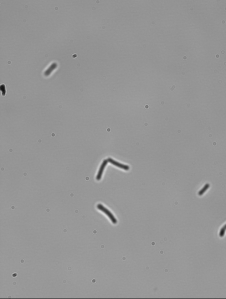Linda Bugge, our REU administrator coordinated a wonderful day for all of the REUs yesterday.
 We all met at CHTM at 9:30 to carpool to our first destination, The National Museum of Nuclear Science & History. We arrived just in time to watch Modern Marvels, The Manhattan Project. I hadn’t seen the show before today, and was pretty impressed with the what I learned. A few key items that I recall (disclaimer: I am not making any kind of statement here, just recalling facts that I learned today):
We all met at CHTM at 9:30 to carpool to our first destination, The National Museum of Nuclear Science & History. We arrived just in time to watch Modern Marvels, The Manhattan Project. I hadn’t seen the show before today, and was pretty impressed with the what I learned. A few key items that I recall (disclaimer: I am not making any kind of statement here, just recalling facts that I learned today):
- The project was started in 1939 and cost over two billion dollars (over 30 billion in today’s dollars).
- There were several, very large, sites built in a very short period of time to facilitate the building of the atomic bombs.The three main sites were Oak Ridge, Tennessee; Los Alamos, New Mexico; and Hanford, Washington. This map shows all the sites.
- The three methods for obtaining Uranium 235 were all extremely difficult, time consuming, and labor intensive.
- Most of the work done to obtain Uranium 235 was done in Oak Ridge.
- Oak Ridge’s energy consumption was 10% of the total US energy consumption during it’s operation.
- Since Uranium 235 was so difficult to obtain, there was only one bomb (Little Boy) made from this material… and no test bomb was made prior. The first Uranium 235 bomb to ever explode was the bomb dropped on Hiroshima.
- Plutonium was easier to produce, and was made by a plutonium production reactor at the Hanford site.
- Because they had plenty of plutonium, they exploded a test bomb on July 16, 1945. Fat Man was dropped on Nagasaki on August 9, 1945.
- Since that time, war related deaths (U.S.) have declined exponentially.
After that we were free to view the exhibits of the museum at our leisure. At 12 we all got back together and went to Chili’s for a wonderful lunch. Next we headed over to CINT (The Center for Integrated Nanotechnologies) for a tour of the facilities and a few informative presentations by some of the staff.

George Bachand was very kind, and took all of us around the facility and explained things as we were walking. The facility is quite large and there is a bunch of research being done. He was very informative, but to be honest, I understood only very little about what we initially saw. We then broke into two separate groups. One group went to tour microprocessors. I went with Wally Paxton’s group to take a look at his Soft and Biological Nanomaterials work.
Wally showed us his lab where he is “developing new strategies for efficient integration of functional molecules, including transmembrane transport proteins, and the means to characterize the action of these exotic molecules at interfaces.” Then we went into an adjoining lab and met another scientist, Nathan who showed us some video he had taken of microtubules.
Nathan had a lot of information for us about his current work and possible future applications for his research. If I understood him correctly, this could possibly, one day in the future, include repairing nerve damage and brain trauma. This was fascinating for me. It seemed similar to the work that Nadia Fernandez-Oropeza is working on. (Nadia is also one of Dr. Koch’s grad students. Anthony and I share a lab with her at CHTM.)
Next we all joined back up to hear from Mark Stevens, who told us about his work as a theorist. Finally Neal Shinn, the Co-Director of CINT, told us about the proposal submission process and life cycle. Basically it works like this:
Anyone who needs help with their research can submit a proposal for use of CINT’s facilities and/or scientists. There are two ways to submit proposals, during their twice a year “call for proposals,” which would provide access to CINT for up to 18 months, or as a “rapid access” submission for time sensitive or short term projects. The proposal should be no more than two pages. About 80% of the proposals submitted get approved. Once approved the only requirement is that the results of your research be published.
After that our day was over. I had a really good time and learned a lot. Many thanks to Linda for all of her efforts putting this day together for all of us.





